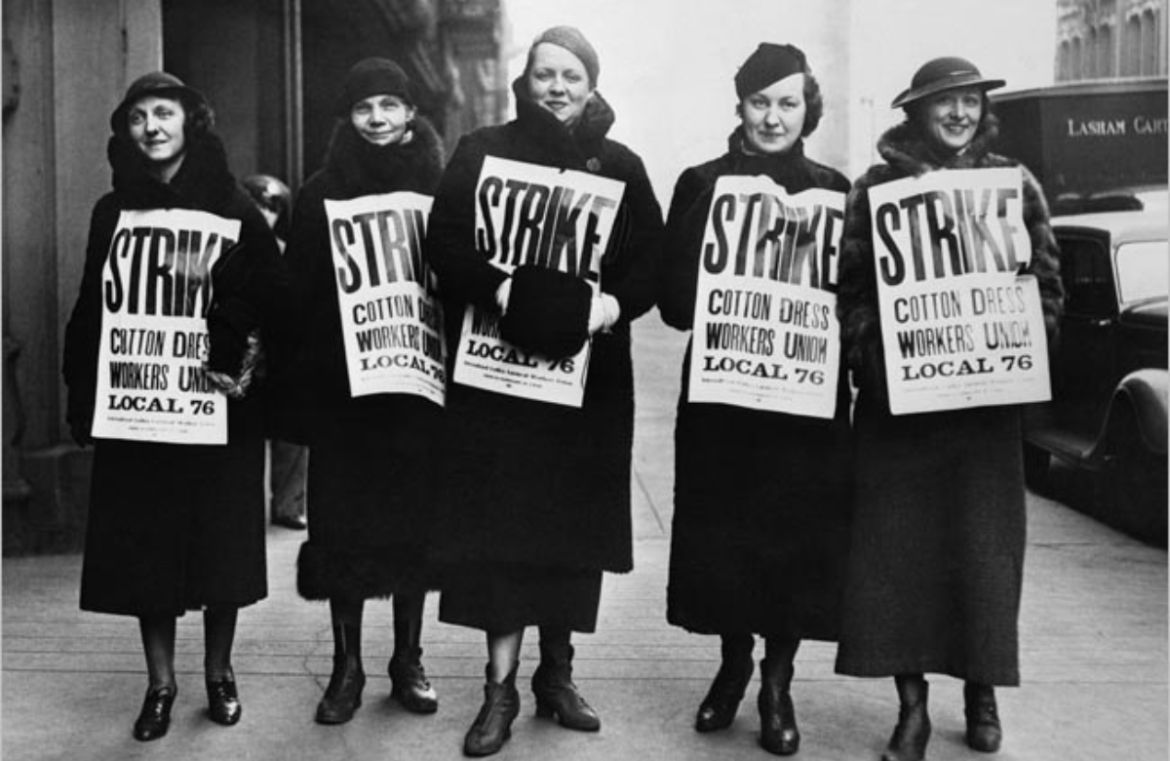International Ladies Garment Workers Union (1900-1995)

As seen on VCU.edu
At the height of its power during the 1930s and 1940s, the International Ladies Garment Workers Union (ILGWU) was one of the most important and progressive unions in the United States. Founded in 1900 as an organization dominated by Jewish and Italian immigrants, its membership rolls expanded greatly in its first few years of operation. Nonetheless, a weak economy and conservative business forces were able to keep the union’s gains in check, leading to two major strikes. In 1909, 20,000 New York shirtwaist makers, mostly women, launched a fourteen-week strike, called “The Uprising,” followed several months later by a strike of 60,000 cloak makers. In the negotiations that followed, the ILGWU was recognized by the industry and won higher wages as well as important new benefits for its members, such as health examinations. In 1911, 146 workers, most of them young women, were killed in the Triangle Shirtwaist Fire leading to a public call for laws to protect workers. As a result, by 1920 the ILGWU was one of the most powerful unions in the organized labor movement.
However, the ILGWU was also beset by devastating rivalries between socialists, anarchists, and other radical movements that had been with the organization since its founding. The problem came to a head in the 1920s when communists tried to take control of the union’s leadership. The communist coup ultimately failed and the moderates, led by David Dubinsky, remained in charge, but the episode cost the union much in terms of morale, time, and money. When Dubinsky was elected president in 1932, the Depression was underway and the union was at an all-time low. Under his dynamic leadership, however, the ILGWU immediately took advantage of the New Deal recovery policies, which included a right to organize and bargain collectively. Membership again soared and in addition to higher wages and shorter hours, the union pioneered benefits such as pension funds, cooperative housing, health care, education and cultural activities.
